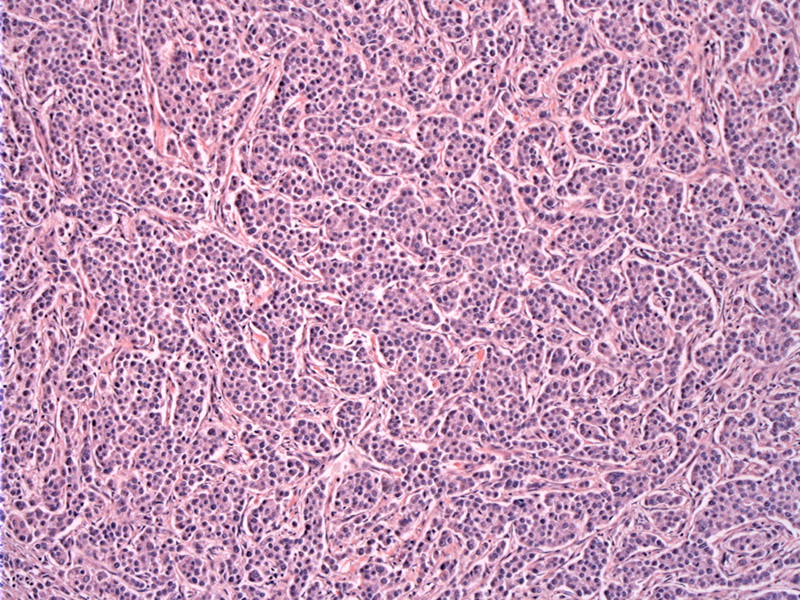

At low power, cords and small nests of rather monotonous tumors cells can be seen.
A nested configuration is typical. Even at this power, the resemblence to other neuroendocrine tumors such as a carcinoid can be appreciated.
In other areas, trabeculae are formed. Scant intercellular stroma is present.
The cytomorphology consists of cells with round nuclei, inconspicuous nucleoli and dispersed chromatin. The tumor cells were chromogranin positive.
Neuroendocrine carcinoma (NEC) of the breast, a pathologic entity newly defined in the 2003 World Health Organization classification of tumors, is a rare type of tumor (2-3% of all breast carcinomas). It is defined as breast carcinomas in which the tumor cells express one or more neuroendocrine markers (e.g. NSE, chromogranin, synaptophysin) in at least 50% of the tumor cells. The criteria distinguishes NEC from focal neuroendocrine differentiation, which can be found in many other types of breast cancer such as in situ, invasive, lobular, colloid or papillary.
Morphologically, common histologic patterns include papillary, nested, and admixed with a ductal component. The majority of reported cases are positive for ER/PR and her2/neu negative.
NEC seems to have a more aggressive course than invasive ductal carcinoma, with a higher propensity for local and distant recurrence and poorer overall survival (Wei). Other studies, however, found the opposite, with NEC tumors having less aggressiveness (Rovera). Given the rarity of this tumor and conflicting data, more studies need to be done for prognostication.
- The WHO criteria defines this tumor as >50% of the neoplastic cells expressing NE markers
Rovera F, et al. Neuroendocrine carcinomas of the breast. Int J Surg. 2008;6 Suppl 1:S113-5. Epub 2008 Dec 13.
Wei B, et al. Invasive neuroendocrine carcinoma of the breast: a distinctive subtype of aggressive mammary carcinoma. Cancer. 2010 Jun 22.